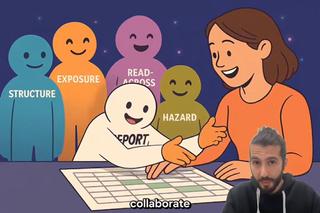Treating genetic heart disease using engineered heart tissue
Some heart disease are caused by a gene mutation in the cardiac muscle cells. People with this genetic disease are affected it between the ages of 20 and 40, and there is no preventative treatment for this. The group of Jolanda van der Velden works on the development of engineered heart tissue made from human stem cells to unravel disease mechanisms and test drugs to treat the disease. They use different kinds of stem-cell-based cultures. 2D cell cultures are useful to test a large number of candidate drugs, while patient-derived stem cells that are differentiated in heart cells can help to get detailed understanding of the disease and test the most promising treatments.
Click on the link in the video to watch more or read the interview with Jolanda here.
New

The NAM Navigator: A unique repository for information on the validation and acceptance of New Approach Methodologies

VHP4Safety project
